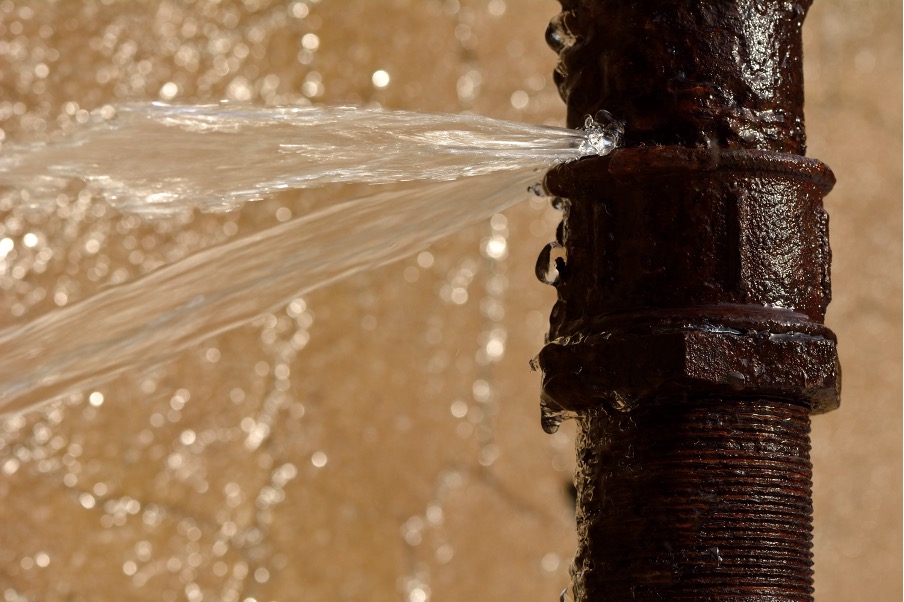Detect Sneaky Water Line Leaks: 6 Ingenious Detection Tips
Detect Sneaky Water Line Leaks: 6 Ingenious Detection Tips
Blog Article
Just about every person has their personal idea about Detecting hidden plumbing leaks.

Early detection of leaking water lines can mitigate a possible calamity. Apart from saving you money, it will decrease the worry and also stress. The minute you discover a leakage, calling your plumber for repair services is the best remedy. Nonetheless, some little water leaks might not be visible. If you can not detect it with your naked eyes, below are some hacks that help.
1. Analyze the Water Meter
Every house has a water meter. Inspecting it is a surefire way that helps you discover leaks. For starters, turn off all the water sources. Ensure no one will certainly purge, make use of the tap, shower, run the washing device or dishwashing machine. From there, go to the meter and watch if it will certainly alter. Because no one is utilizing it, there must be no motions. That indicates a fast-moving leakage if it moves. If you spot no adjustments, wait an hour or 2 as well as check back again. This means you may have a slow-moving leakage that can also be below ground.
2. Inspect Water Intake
Assess your water expenses and track your water usage. As the one paying it, you need to see if there are any kind of discrepancies. If you spot sudden changes, despite your consumption being the same, it suggests that you have leakages in your plumbing system. Bear in mind, your water costs must fall under the same array on a monthly basis. An unexpected spike in your expense indicates a fast-moving leakage.
On the other hand, a consistent rise on a monthly basis, despite having the very same behaviors, reveals you have a slow-moving leakage that's likewise slowly escalating. Call a plumber to thoroughly check your building, specifically if you really feel a cozy area on your flooring with piping beneath.
3. Do a Food Coloring Test
30% comes from bathrooms when it comes to water usage. Test to see if they are running appropriately. Decrease specks of food shade in the container as well as wait 10 minutes. If the color in some way infiltrates your dish during that time without flushing, there's a leak in between the storage tank and dish.
4. Asses Outside Lines
Don't neglect to inspect your exterior water lines too. Must water permeate out of the connection, you have a loosened rubber gasket. One little leak can squander bunches of water and surge your water costs.
5. Inspect and Evaluate the Circumstance
House owners must make it a behavior to examine under the sink counters and also also inside closets for any kind of bad odor or mold and mildew development. These 2 red flags indicate a leak so prompt focus is called for. Doing regular assessments, also bi-annually, can save you from a significant trouble.
Much more notably, if you recognize your house is already old, keep a watchful eye on your heating units, pipes, pipes and so on. Check for stainings and also compromising as many home appliances and also pipes have a life span. They will certainly also normally wear away because of tear and also wear. Do not wait for it to rise if you suspect leaking water lines in your plumbing system. Call a professional plumber today so you do not wind up with a terrible mess in your home.
Early detection of leaking water lines can minimize a prospective calamity. Some tiny water leaks might not be noticeable. Checking it is a guaranteed means that helps you find leakages. One small leakage can squander heaps of water and surge your water bill.
If you suspect dripping water lines in your plumbing system, don't wait for it to intensify.
WARNING SIGNS OF WATER LEAKAGE BEHIND THE WALL
PERSISTENT MUSTY ODORS
As water slowly drips from a leaky pipe inside the wall, flooring and sheetrock stay damp and develop an odor similar to wet cardboard. It generates a musty smell that can help you find hidden leaks.
MOLD IN UNUSUAL AREAS
Mold usually grows in wet areas like kitchens, baths and laundry rooms. If you spot the stuff on walls or baseboards in other rooms of the house, it’s a good indicator of undetected water leaks.
STAINS THAT GROW
When mold thrives around a leaky pipe, it sometimes takes hold on the inside surface of the affected wall. A growing stain on otherwise clean sheetrock is often your sign of a hidden plumbing problem.
PEELING OR BUBBLING WALLPAPER / PAINT
This clue is easy to miss in rooms that don’t get much use. When you see wallpaper separating along seams or paint bubbling or flaking off the wall, blame sheetrock that stays wet because of an undetected leak.
BUCKLED CEILINGS AND STAINED FLOORS
If ceilings or floors in bathrooms, kitchens or laundry areas develop structural problems, don’t rule out constant damp inside the walls. Wet sheetrock can affect adjacent framing, flooring and ceilings.
https://www.servicemasterbyzaba.com/blog/how-to-detect-water-leakage-in-walls/

I came across that review on Locating water leaks while surfing around the web. You should take the opportunity to promote this content if you appreciated it. Many thanks for going through it.
Immediate help? Ring! Report this page